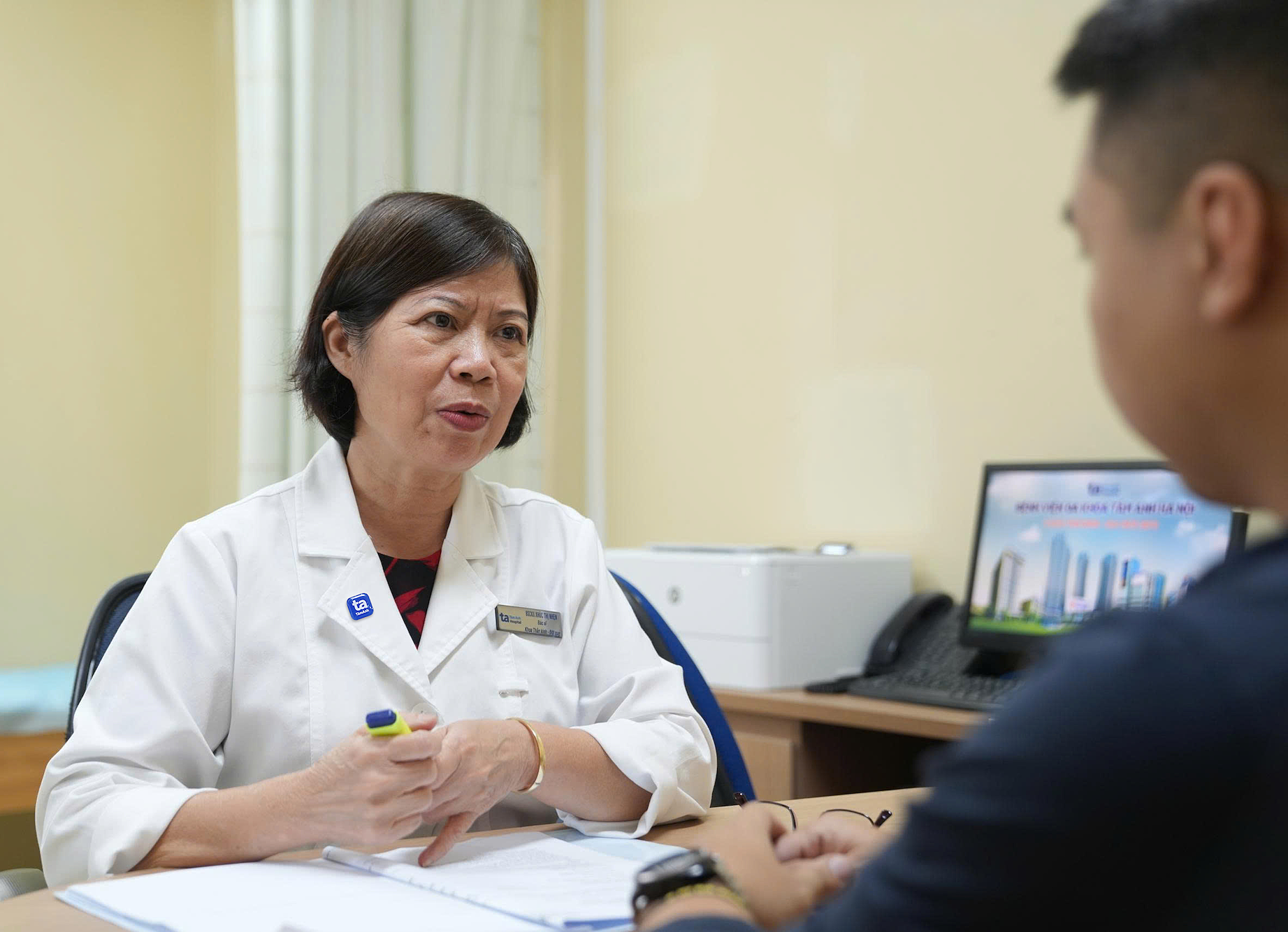Shingles is a skin infection caused by the reactivation of the varicella-zoster virus (VZV), the same virus that causes chickenpox. After a chickenpox infection, the virus remains dormant in nerve cells. When the immune system is weakened, due to factors like aging, chronic illness, or stress, the virus can reactivate and cause shingles. The VZV then reproduces and spreads along sensory nerves, causing skin lesions and nerve pain.
Doctor Vu Thi Hinh, from the Department of Neurology and Stroke at Tam Anh General Hospital in Hanoi, explains that patients typically experience pain or tingling on one side of their face or body, followed by a red rash with small blisters. Sometimes, these blisters merge to form larger ones, which can become infected. Several complications can arise.
Postherpetic neuralgia
This is one of the most common and persistent complications of shingles. The risk increases with age and is prevalent in people over 50. The pain persists in the area affected by the shingles rash, even after the rash and blisters have healed, sometimes lasting for months or even years. The pain can be described as burning, stabbing, electric shock-like, or a constant ache that intensifies with even light touch or clothing. This chronic pain can significantly impact quality of life, leading to sleep disturbances, depression, and anxiety.
According to Dr. Hinh, postherpetic neuralgia is difficult to treat completely. Standard painkillers are often ineffective, and patients may require a combination of medications or therapies to manage their symptoms.
Skin inflammation and infection
Shingles causes painful blisters that can turn into ulcers when they burst. If not properly cared for, these ulcers are susceptible to bacterial infections, particularly staphylococcus, leading to skin inflammation, pus formation, or soft tissue infections. Common signs include swelling, redness, increased pain, pus, or a foul odor. If left untreated, these skin lesions can penetrate deeper tissues or enter the bloodstream, causing potentially dangerous sepsis.
Vision loss or impairment
This complication occurs when shingles affects the trigeminal nerve, particularly the ophthalmic branch (the right half of the face), leading to ophthalmic shingles. This can cause eye sensitivity to light, swollen eyelids, increased intraocular pressure, corneal inflammation and scarring, and ultimately, vision impairment or even blindness.
 |
A neurologist examines a patient. Illustration: Tam Anh General Hospital. * |
Facial paralysis
Shingles can affect the cranial nerves, especially the 7th cranial nerve, resulting in peripheral facial paralysis. Symptoms include a drooping mouth, inability to wrinkle the forehead, difficulty moving facial muscles on the affected side, loss of taste in the front part of the tongue, and decreased tear production. These symptoms may resolve over time or become permanent.
Hearing loss
If shingles affects the inner ear and the vestibulocochlear nerve, patients can develop Ramsay Hunt syndrome, which causes hearing loss on one side, accompanied by symptoms like dizziness, nausea, and loss of balance.
Insomnia and psychological disorders
In addition to physical effects, shingles can have psychological consequences, especially for those experiencing chronic pain. The constant burning and discomfort, both day and night, can disrupt sleep, leading to fatigue, memory impairment, and reduced work capacity.
Pneumonia
This is a less common but serious complication, mainly occurring in individuals with pre-existing weakened immune systems. This is classified as disseminated shingles, indicating a severe form of the infection. According to Dr. Hinh, if not treated promptly, pneumonia following shingles can be fatal.
Encephalitis and meningitis
Individuals with shingles affecting the ear or facial area are at risk of developing these complications. The ear's anatomical structure, its connection to the brain, and its abundance of nerves make it easier for the virus to spread to the brain. If individuals experience unusual symptoms such as mild headaches, unusual skin lesions, eye pain accompanied by a rash on the forehead or around the eyes, they should consult a specialist. Early detection and treatment, especially within the first 72 hours of onset, are crucial for limiting complications. Doctors may prescribe antiviral medications and antibiotics to shorten the duration of the illness and reduce the risk of complications.
Individuals should strengthen their immune systems through a balanced diet, regular exercise, stress reduction, and adequate sleep. Avoiding contact with people who have chickenpox and getting vaccinated against shingles can reduce the risk of contracting the disease and developing postherpetic neuralgia by up to 90%, according to Dr. Hinh.
Trinh Mai
| Readers can submit questions about neurological diseases here for doctors to answer. |












